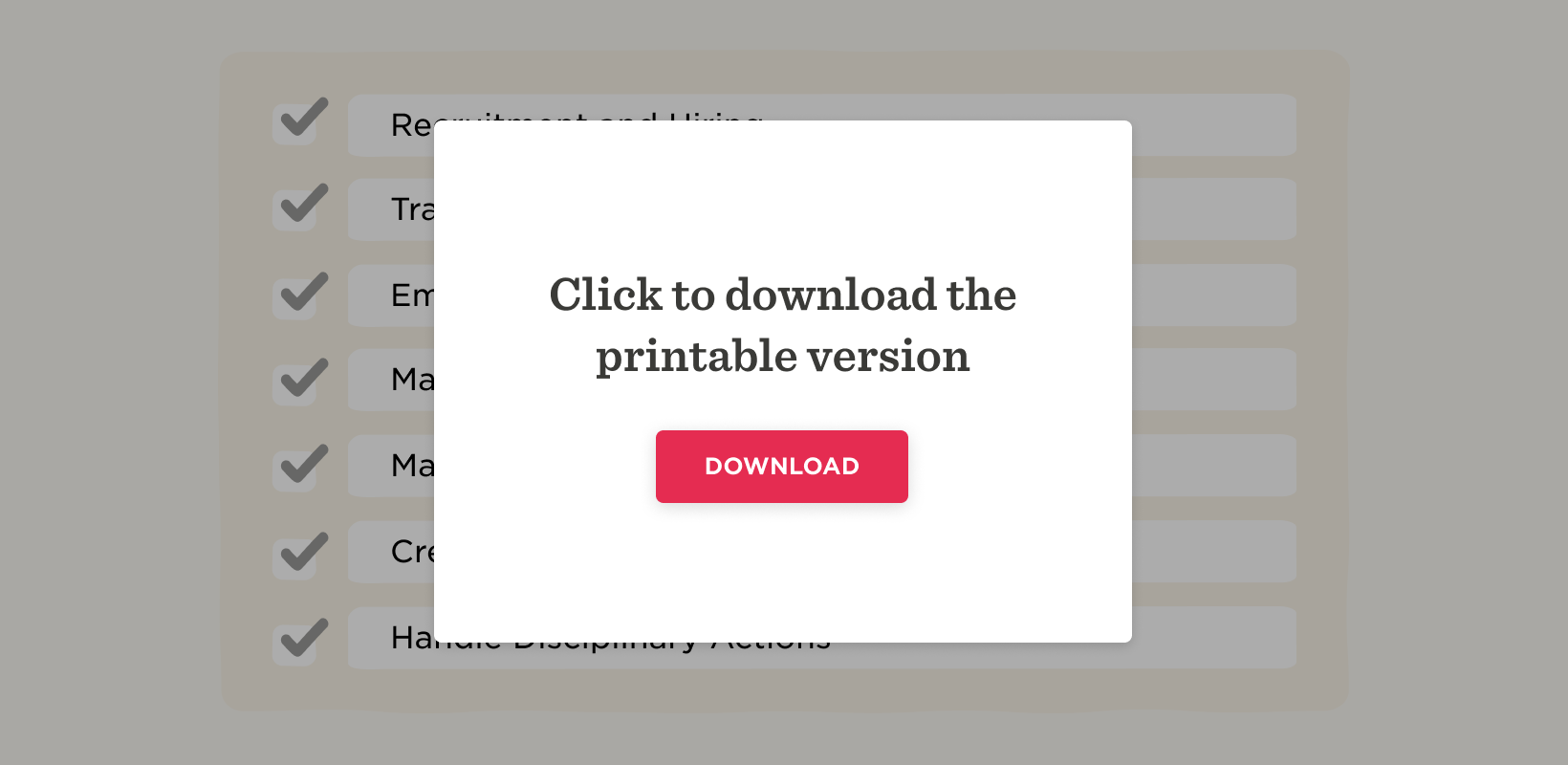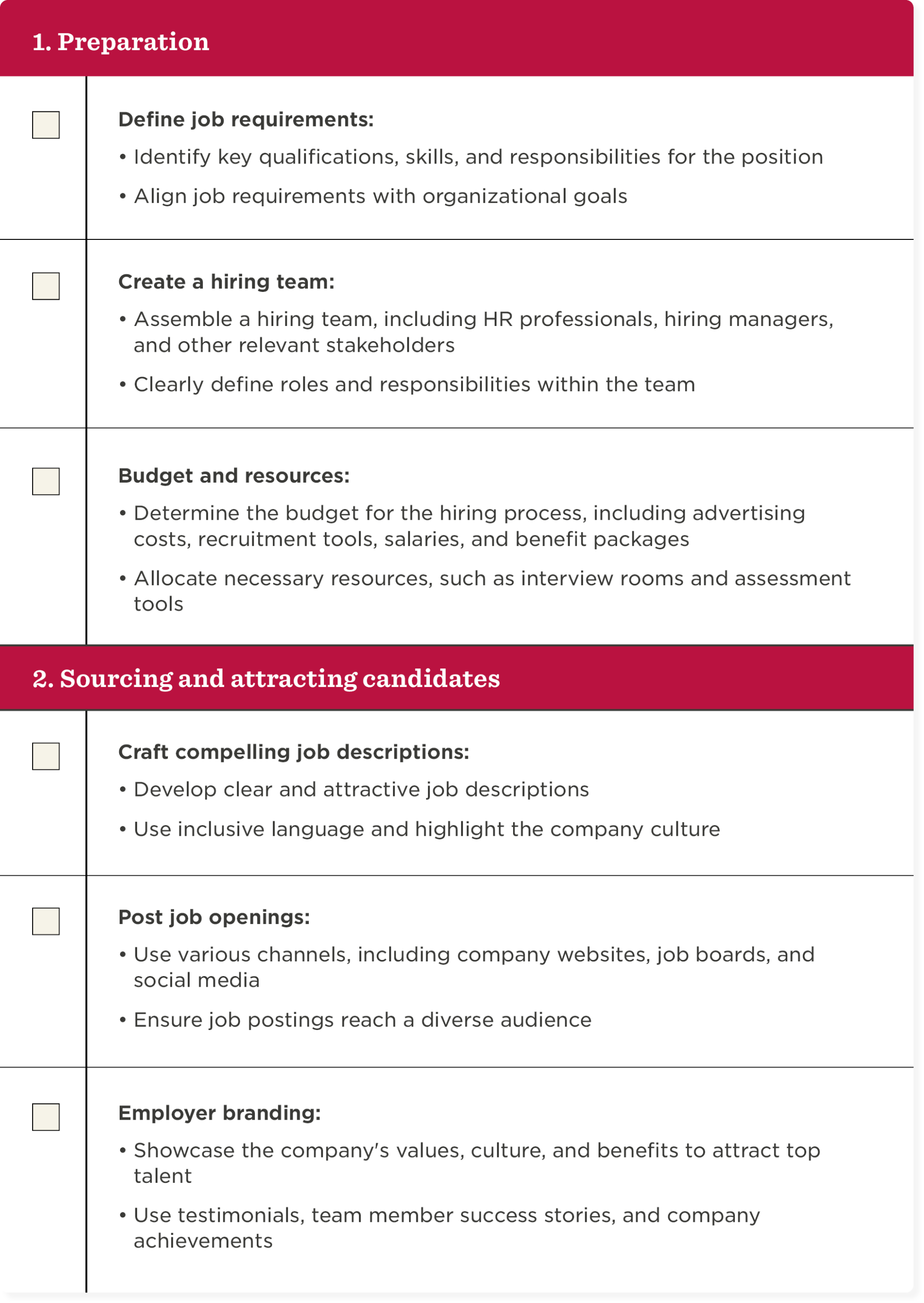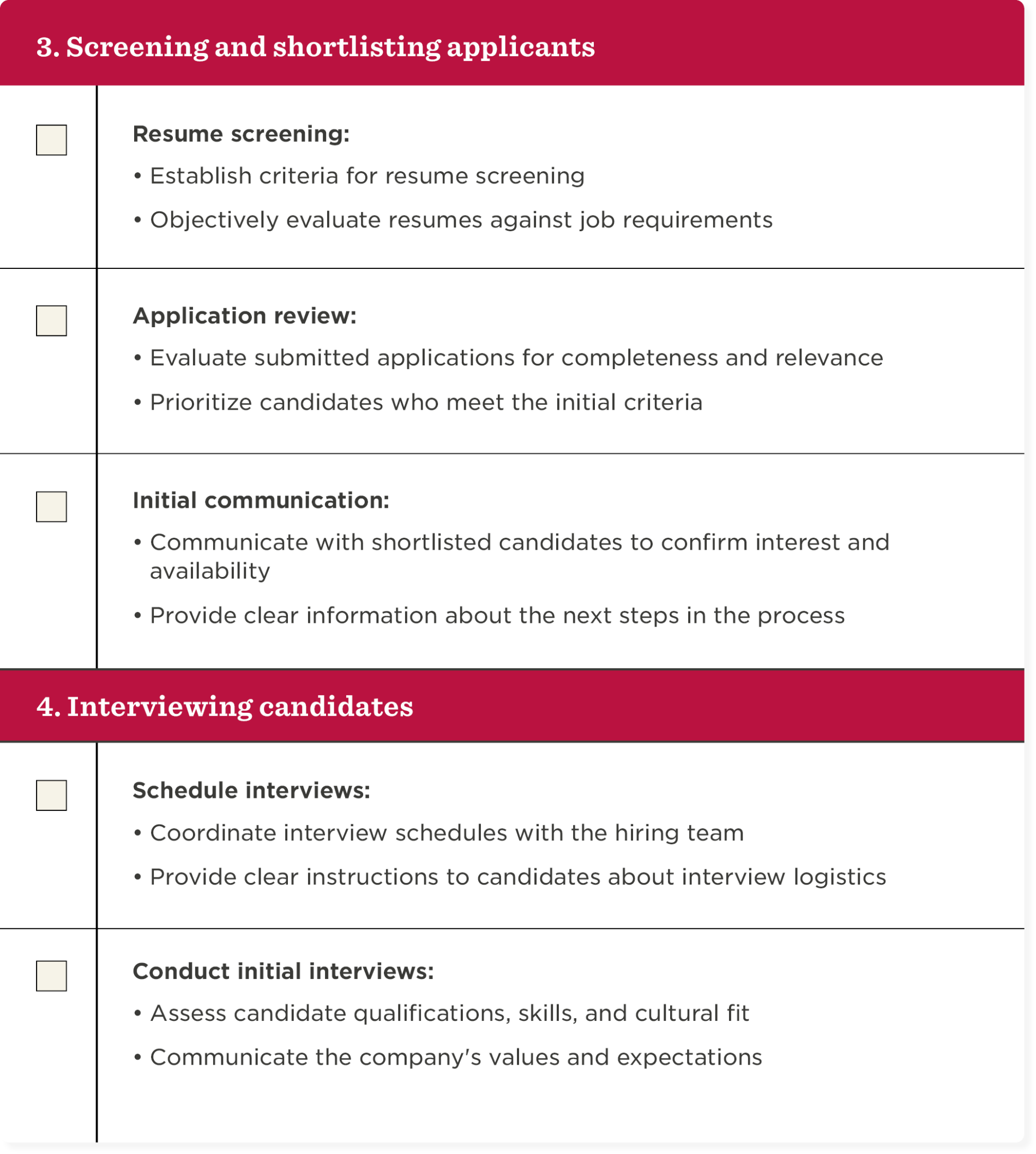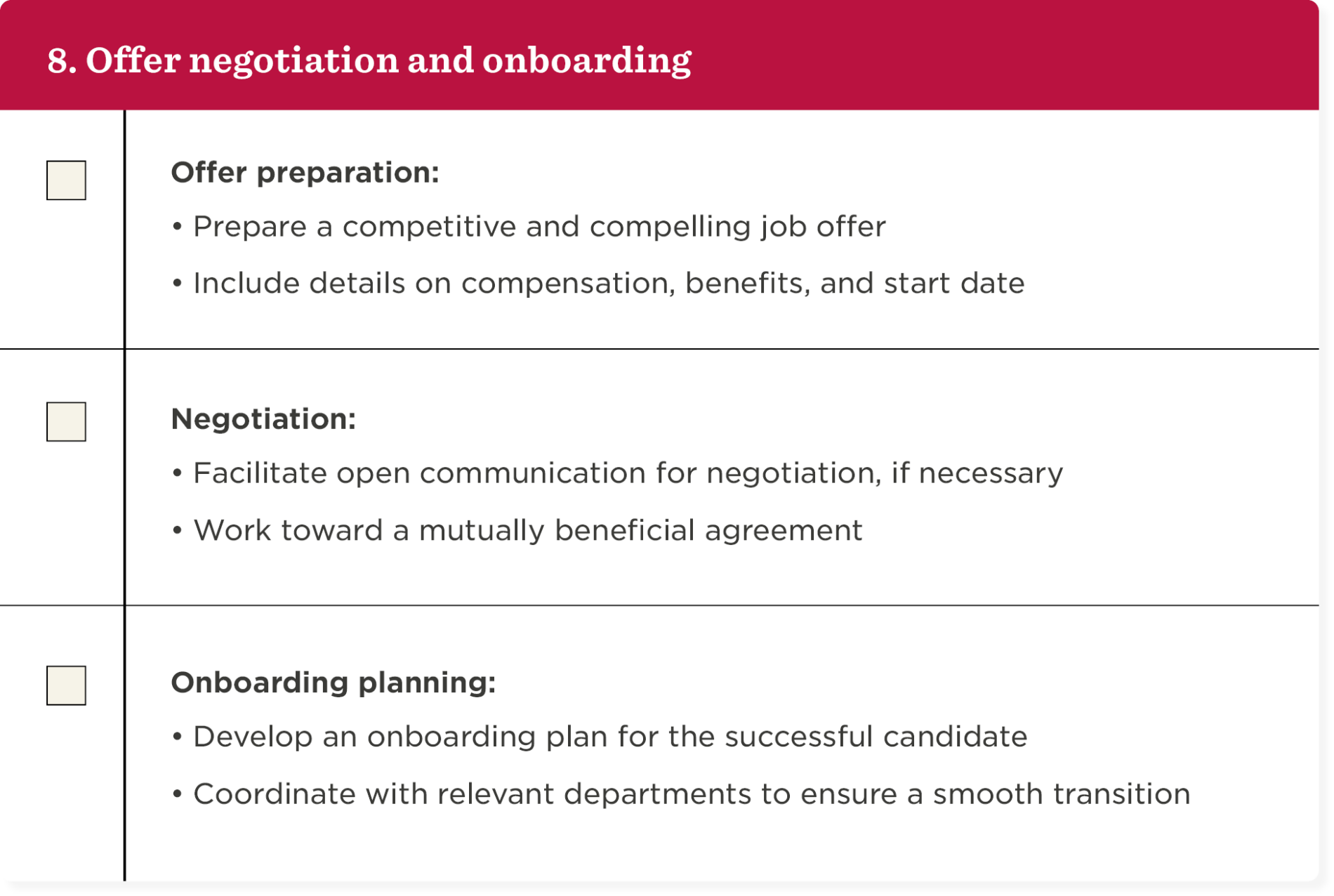In today’s competitive job market, hiring talent can feel like finding a needle in a haystack.
You could spend hours trawling through hundreds of resumes to find the perfect candidate—and things have gotten even more challenging on the hiring front with no end in sight to the “Forever War for Talent.” This is why an efficient hiring process is vital for attracting and retaining top talent.
But how do you create an efficient recruitment process, especially if your HR and Talent Acquisition teams are juggling multiple HR tech systems for planning, hiring, and onboarding?
In an ideal world, every organization would have a single, comprehensive data source that encompasses the entire employee lifecycle from initial planning for a role through hiring—and even up to retirement—with robust lifecycle analytics. The whole process would create an exceptional candidate experience and ensure easy collaboration between every stakeholder involved in hiring (from your Talent Acquisition team and hiring managers to HR and Finance), where they can all join forces in one place.
The trick is to start small. A hiring process checklist can help.
When you use a hiring process template, you can simplify and optimize your recruitment efforts. From defining the role requirements to conducting interviews and making offers, a well-structured checklist for hiring talent ensures that you don’t overlook any essential recruitment task—and that your candidates feel valued every step of the way.
You can proactively address each stage of the hiring journey with a recruiting template and create a clear recruitment process that saves time and enhances the quality of your hires.
We designed the checklist in this guide as a hiring process co-pilot. Use it to support you through the hiring journey and reach your recruitment goals.

What is a hiring process?
An effective hiring process helps you build a high-performing and talented team. It also enhances retention.
A hiring process is how an organization discovers, evaluates, and onboards new team members. The best ones have simple workflows and collaborative processes that involve every stakeholder in the hiring journey.
Stand-out hiring processes use exceptional HR tech to draw on the support of every stakeholder to navigate through a pool of applicants and pick out those who best align with your company’s culture, values, and job requirements.
Exceptional HR platforms provide a unified journey for everyone involved:
- Your Talent Acquisition teams can use it to bring in the best talent from the best sources — including data on internal mobility, untapped skills in your current workforce, and employee referrals
- Your hiring managers can use it for easy candidate communication that is seamlessly incorporated into their everyday workflows and create tasks designed to provide more control and visibility into the hiring pipeline
- Your HR and Finance teams can use it to create workflows for planning and approving new positions that fall within the established budget and leverage lifecycle analytics to measure the efficacy of the company’s growth strategy
Why use a hiring process checklist?
A hiring process checklist or recruitment process template enables everyone involved to navigate through the recruitment landscape with greater ease, ensuring a quick and methodical evaluation of applicants and a positive candidate experience.
It also helps you create a structured and organized approach toward hiring the right talent for your organization whether you’re leveraging HR tech or not.
A checklist gives you a clear path to follow, outlining the necessary steps of the hiring process. It ensures you don’t miss any critical tasks during the recruitment process, resulting in better hiring outcomes.
<<Simplify your recruitment. Download our free hiring process checklist.>>
The 8-step hiring process checklist
Recruitment is a challenging task that requires careful planning and strategy. The comprehensive hiring process checklist below ensures you carefully plan and execute each of the hiring process steps, helping you attract, evaluate, and onboard top talent.
Before diving in, let’s take a closer look at each step of the recruiting process template.
1. Preparation
This step is where you set up the groundwork for successful recruitment. It involves assembling a hiring team and determining resources for the hiring process.
It’s worth considering—along with your team—why you’re hiring for the role, and what your goals are. It’s important to align organizational objectives with the job description, role requirements, and ensure the headcount budget allotted to it meets or exceeds market benchmarks. By clarifying this early on, you can attract relevant candidates who embody your company’s values and goals.
2. Sourcing and attracting candidates
Once you have a clear idea of the role’s requirements and your ideal candidate, it’s time to source applications.
Crafting compelling job postings that showcase your company culture and unique selling points can attract candidates who are the right fit for the role.
Promote your job postings on job boards, social media platforms, and professional networks. When promoting a job opening on different platforms, consider broadening where you post so you can reach a more diverse group of people.
Are you sourcing candidates globally or from a particular region? Encourage people from marginalized groups to apply, so you can ensure everyone has an opportunity to be a part of your organization, no matter their background.
Is the position totally remote, hybrid, or office-based? Flexibility will open the doors to more talented candidates worldwide and make your workplace more accessible to differently-abled team members or people living outside a reasonable home-to-office commute.
It’s also a good idea to think about where your ideal candidates spend their time online and focus your efforts on posting job ads on those platforms. For example, if you want to reach Gen Z candidates, consider posting job openings on TikTok.
Remember that you can source candidates from within your organization, too. Internal recruitment is a low-cost way to fill a role, speeds up the onboarding process, and provides career progression opportunities for your people.
3. Screening and shortlisting applicants
Now that you’ve advertised the job, you’ll soon receive many applications. The next step is to screen and shortlist applicants.
You can screen applications efficiently by developing screening criteria based on the job requirements and necessary qualifications. ATS and pre-employment assessments can support the screening process and help you identify candidates who have the required skills and experience for the role.
4. Interviewing candidates
Conducting structured interviews that focus on both technical skills and cultural fit is important for evaluating a candidate’s abilities and ensuring they align with your company’s values.
Using behavioral interview techniques and asking situational questions can provide valuable insights into a candidate’s problem-solving capabilities and interpersonal skills.
And by giving a candidate the space to ask questions, you’ll help them feel at ease while also gaining a deeper insight into what’s important to them.
5. Assessments
Once you’ve conducted the initial interviews and identified your top contenders, it’s time to put the remaining candidates’ abilities to the test.
Design a practical exercise that assesses whether candidates have the right skills for the job. Consider using real-life scenarios or case studies to test their problem-solving skills—they’re a great way to gauge how candidates approach challenges they’ll face in the role and whether they embody company values.
6. Panel interview
In this final interview stage, you can set up a panel that includes relevant team members (such as the hiring manager, secondary manager, department heads, and even individual contributors).
During the panel interviews, it’s helpful to talk through each candidate’s approach to the skills assessment. This is your team’s chance to ask any remaining questions or answer any of the candidate’s questions, before making a final hiring decision.
7. Reference checks and background verification
At this point, you’ll have a couple of talented candidates in mind for the available position.
It’s important to verify their information through background screenings to validate their qualifications. To ensure they meet legal requirements, it’s worth confirming their residency status and right to work in your country, too.
Checking references from previous employers and conducting background checks can help mitigate risks. It confirms the candidate’s work history and qualifications so you and your hiring team can feel confident before making a decision.
8. Offer negotiation and onboarding
Now it’s time for your hiring team to choose a candidate for the role and make an offer.
Negotiation will come into play here. This involves finalizing the terms of employment, discussing salary and benefits, and presenting a job offer that meets the candidate’s expectations.
If the candidate accepts, the onboarding process begins. You can help the new hire become familiar with their role and feel comfortable in the workplace by providing any necessary training and support.
A positive onboarding experience sets the new hire up for success and promotes retention.
Your hiring process checklist
<<Simplify your recruitment. Download our free hiring process checklist.>>
How long does the hiring process take?
On average, the hiring process takes around 48 days. But this can vary depending on position seniority, the number of interviews, internal approval procedures, background checks, and the responsiveness of both the employer and the candidates.
Higher-level positions tend to have a longer progressive hiring process due to the complexity and importance of the role.
Hiring process best practices
Here are some best practices to keep in mind that will enhance your hiring process:
- Offer timely feedback. Providing prompt feedback to candidates after interviews shows professionalism and respect for their time. Clear communication throughout the hiring process contributes to a positive candidate experience.
- Prioritize diversity and inclusion. You can prioritize diversity and inclusion in your hiring process by writing inclusive job descriptions, focusing outreach efforts on marginalized groups, and ensuring all shortlisting is fair. Embracing different perspectives and backgrounds within your organization leads to more innovation, higher productivity levels, and greater profits.
- Assess recruiting metrics. Recruiting metrics such as time-to-hire, quality of hire, and the applicant drop-off rate can give you valuable insights that help you improve the hiring process.
- Continuous improvement. Gathering feedback from both successful and unsuccessful applicants can help you refine your recruitment process and improve hiring outcomes. Continuous improvement ensures your talent acquisition strategies stay relevant and effective for attracting top talent.
Recommended For Further Reading
Automate your hiring process with HR tech
With HR tech, you can reduce administrative burdens by automating tasks that were once time-consuming and labor-intensive. This allows your team to focus on strategic tasks rather than manual paperwork.
Recruitment often requires the participation of various stakeholders, and HR tech enables easy collaboration between talent acquisition specialists, hiring managers, and the finance team—ensuring everyone has access to the same data.
HR systems like ATS also enable data-driven decision-making. They provide insights into hiring metrics and trends that help you identify top talent efficiently.
They can also send out automated emails to candidates—which comes with the added benefit of improving the recruitment experience for both candidates and hiring managers.
HR automation can help recruitment teams sift through thousands of applications to identify potential candidates with the right qualifications and experience, saving time and making the hiring process much easier for recruiters.
Using HR automation to screen and shortlist applicants can also help hiring managers overcome unconscious biases—improving hiring outcomes.
Besides sourcing talent, HR automation also helps your hiring team manage the recruiting process efficiently, so you can quickly hire talented candidates with the right skills and win the “War for Talent.”
Embracing HR technology and automating parts of the hiring process can make recruitment more efficient and help you make informed decisions that drive the success of your hiring efforts. HR automation tech can also free up time so you can focus on the critical relationship-building elements of the recruitment process, ultimately improving the candidate experience.
A roadmap to better hiring outcomes
A comprehensive hiring checklist, or recruitment template, serves as a roadmap, guiding you through each stage of the hiring journey.
It will help you put a more effective and thorough hiring process in place that attracts and retains top talent. Exceptional hiring processes can create better experiences for all stakeholders involved in the hiring process within your organization and give candidates a stellar experience, whether you make them an offer or not.
With a clear process in place, you can save time, reduce hiring costs, and ultimately build a strong, diverse team for your organization.




